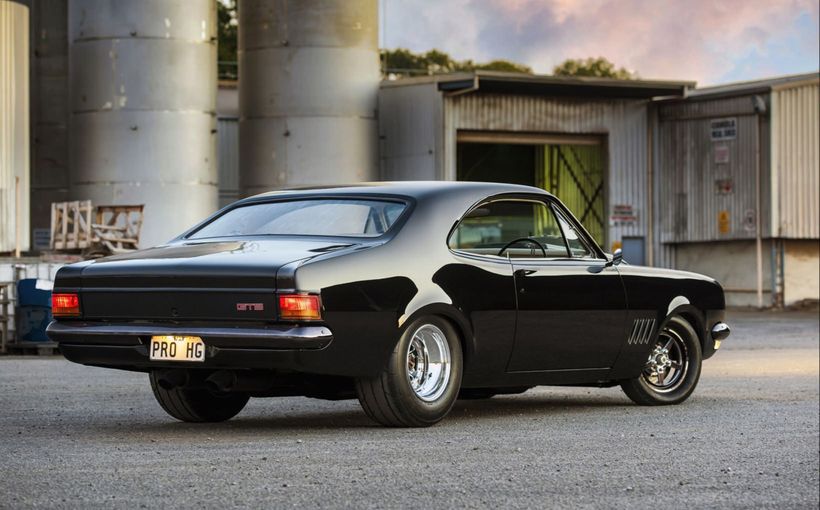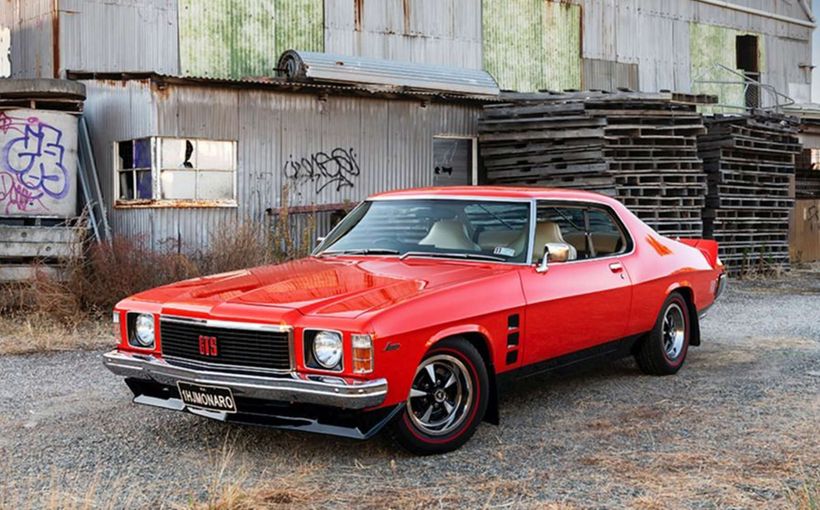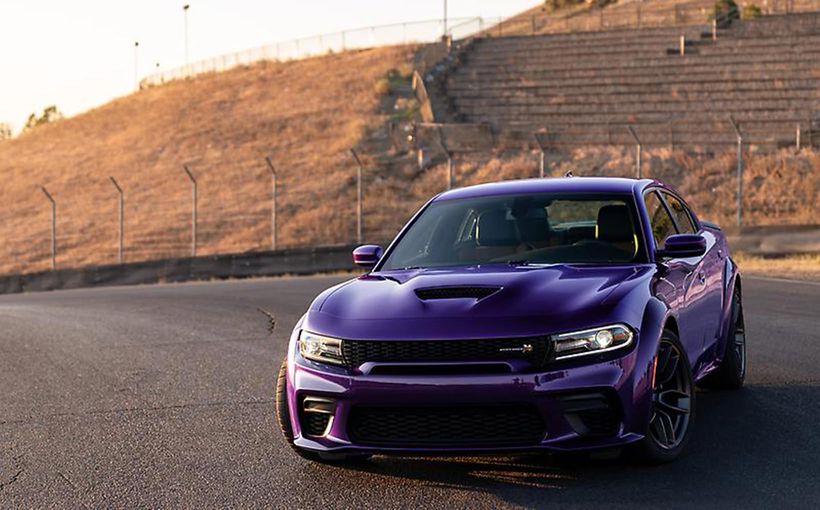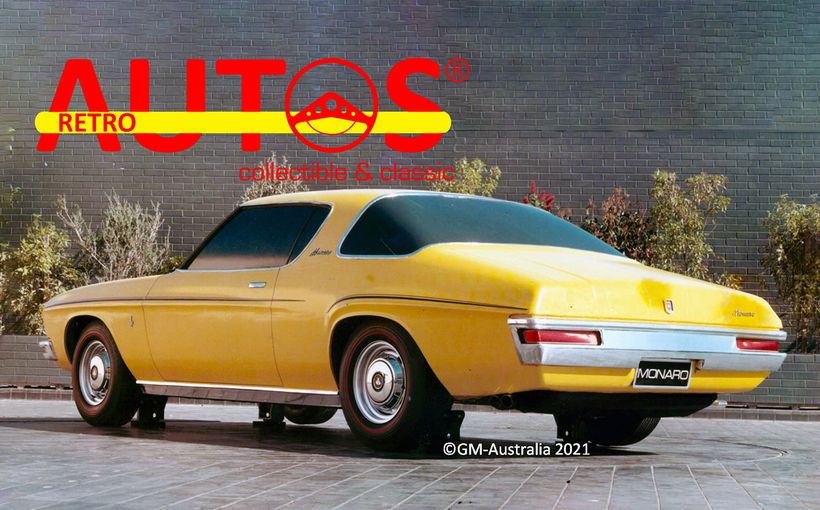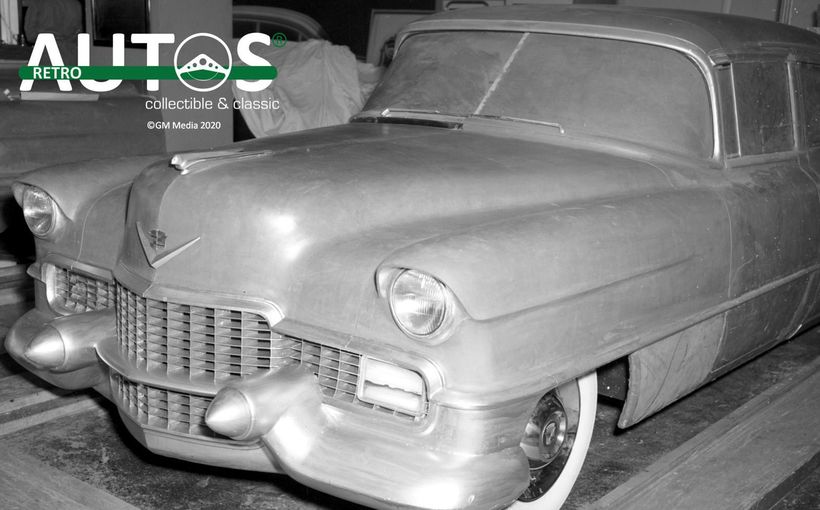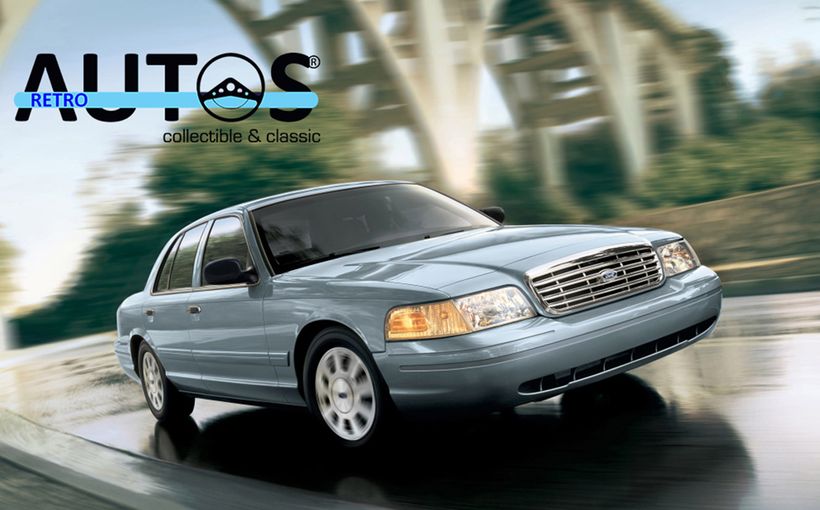Magnificent Muscle! Pete Geoghegan’s HJ Monaro Sports Sedan

The 1970s was a golden era for Australian sports sedan racing and one of the best remembered cars of that period was the big 350cid V8 Monaro driven by multiple Australian Touring Car Champion Pete Geoghegan.
Backed by tobacco giant WD & HO Wills through its Craven Mild cigarette brand, this tyre-melting muscle monster soon became known simply as the ‘Craven Mild Monaro’ thanks largely to the strong visual imprint created by its classy metallic gold war paint.
The car was owned by wealthy industrialist Laurie O’Neil, who gave renowned race mechanic and car constructor John Sheppard a simple task: to build him the best sport sedan in Australia.
O’Neil wanted his good mate Pete Geoghegan to drive it in 1974, with a view to claiming the rich bounties on offer from cashed-up track promoters keen to capitalise on the magnetic crowd-pulling power of these highly modified cars.
The end result of Sheppard’s masterful interpretation of O’Neil’s request was arguably what should have become the blueprint for future sports sedan design, as it was reminiscent of its immortal Improved Production predecessors like Beechey’s Monaro, Moffat’s Mustang, Jane’s Camaro and Pete’s Super Falcon.
The Craven Mild Monaro embodied the best of both worlds; a traditional front-engined V8 muscle car that preserved the integrity of its production bodyshell, mixed with the right amount of exotic competition hardware to produce shattering performance.
When it made its belated track debut in early 1975, Geoghegan’s Monaro was the last of the big dollar professionally-built sports sedans to embrace this production-based philosophy.
Radical creations like John McCormack’s Valiant Charger with a mid-mounted 5.0 litre Repco-Holden F5000 V8 and Bryan Thomson’s mind-blowing Chev V8-powered Type III VW fastback had started competing the year before, starting a sports sedan design trend that has since been widely copied.
However, the loss of production car integrity in the McCormack and Thomson cars and the many clones that followed - with tubular steel space-frame chassis, mid-mounted engines and wafer-thin clip-on bodywork - is what makes the Craven Mild Monaro such a special and pivotal car in historic terms.
In the eyes of many fans, O’Neil and Sheppard got the mix just right, from the open-piped roar of its fuel-injected Chev 350 V8 to the high-pitched whine of its straight-cut Hewland gears, to the classy Ford GT40 ‘knock-off’ wheel hubs and beautiful hand-formed wheel arch flares on each corner.
Geoghegan and his magnificent Monaro only competed for two seasons but clearly they left an indelible impression.

O’Neil and Sheppard draw on GT40 and Can-Am inspiration
The outline of O’Neil’s new sports sedan began to take shape during discussions with Sheppard in 1973, when the rich Toby Lee Sports Sedan Series at Sydney’s Oran Park was in full swing.
Pete Geoghegan was driving O’Neil’s Porsche 911 at the time, which although being competitive in the series did not have the raw grunt required to tame the top V8-powered cars.
Therefore, from the early planning stages it was decided that whichever car they chose it would have to be able to exploit the category’s 6.0 litre engine capacity limit. And be based on a popular Australian make and model for ease of parts supply and maximum spectator appeal.
Given the success of Bob Jane’s HQ GTS 350 Monaro coupe, which had made a painless transition from the defunct Improved Production touring car class to sports sedans in 1973, they decided to follow suit.
After all, Sheppard had been hands-on in the building of Jane’s car so he knew the model well. And Holden was most helpful in supplying a brand new HQ Monaro GTS 350 coupe direct to Sheppard’s Melbourne workshop, which just happened to be called Monaro Motors.
Another early decision was to keep the engine in its original location ahead of the firewall (“where it belongs!” according to Sheppard) rather than adopt the emerging trend of mounting the engine wholly inside the cabin for better weight distribution.
Sheppard was rightly concerned about the potential for driver injury in a major crash or if the engine or clutch were to explode, which was a common occurrence back then.

It was also decided not to follow muscle car tradition with a four-speed gearbox and live rear axle.
O’Neil’s Monaro would feature a sophisticated five-speed trans-axle and independent rear suspension, inspired by the Le Mans-winning Ford GT40 and Can-Am sports cars.
This would provide big advantages in front-to-rear weight distribution and less unsprung weight. And it would get its V8 grunt to ground better thanks to the independent rear-end’s ‘pro-squat’ geometry under hard acceleration.
O’Neil, a passionate motor sport enthusiast with a love of exotic machinery, used his extensive overseas contacts to secure not one but two Hewland LG 600 trans-axles. These rugged five-speed transmissions were commonly used behind the massive fuel-injected big block V8s of the Can-Am series, so were considered plenty strong enough.
O’Neil also sourced some GT40 rear suspension uprights with classy ‘knock-off’ single-nut wheel hubs, suspension and drive-shaft components, lightweight magnesium wheels and many other items (even a pair of GT40 seats) that would be needed for the Monaro build.
As each of these components were shipped to Melbourne as O’Neil tracked them down, Sheppard set to work on the project towards the end of 1973 with an expectation that if all went to plan the new car would be ready to tackle the rich 1974 Toby Lee Sports Sedan Series due to kick off at Sydney’s Oran Park in March.
As it turned out, delays in delivery of all the special components took much longer than expected and the car didn’t actually hit the track until a full year after its originally proposed completion date.

Building the Beast
Sheppard knew the basic Monaro two-door unitary bodyshell was a very robust structure so the initial emphasis was on removing as much weight as possible without reducing the core strength of the standard body-chassis unit.
After stripping the new HQ Monaro back to a bare shell, Sheppard seam-welded the entire structure for maximum torsional rigidity and removed any braces or brackets fitted to the production car that weren’t needed for competition use.
He then used a power drill and a variety of hole-cutters in diameters up to 50mm to quickly remove excess sheetmetal from sills, internal door frames, front and rear bulkheads and roof pillars. The freshly-cut steel ‘cookies’ that started to pile up on the workshop floor confirmed this weight loss program was simple and effective.
Sheppard also constructed a very light but rigid roll cage made from thin-wall chrome-moly tubing firmly bolted to the bodyshell at numerous points throughout the cabin. This was to not only protect Geoghegan in a serious crash but also served as a stout internal brace or ‘space-frame’ to reduce chassis flex.
Two large tubular steel braces also filled the open space between the firewall and Monaro front chassis rails to boost rigidity through simple triangulation of the front end. Another brace was welded across the boot floor, to provide extra support for the new Hewland trans-axle mountings and IRS components.
More weight was removed by replacing the standard Monaro’s steel front and rear bumper bars with lightweight fiberglass replicas. The boot lid and bonnet were also re-made in fiberglass and featured the latest in aerodynamics.
The bonnet incorporated a large rear-facing or ‘cowl induction’ air scoop design that allowed the engine to breathe through the high pressure area at the base of the windscreen. The centre of the boot lid included a large NACA duct to feed cooling air to the engine’s remote oil cooler mounted in the boot.
A series of small vortex generators were also attached to the trailing edge of the roof to direct more air flow into this scoop and onto the rear spoiler to improve their efficiency.
A further weight reduction resulted from replacing the cabin’s standard window safety glass with special scratch-resistant clear polycarbonate. This change also allowed Sheppard to install a neat ‘Vista-vent’ from a Cessna light aircraft to feed cooling air to the driver’s face.

Tour de Force: Chevy V8 meets Ford GT 40!
As outlined earlier, the Monaro’s drivetrain was a mix of Chevy V8 muscle car tradition with Le Mans and Can-Am sophistication.
The 350 cid Chevrolet small block, at 5.7 litres, slotted in just below the category’s 6.0 litre engine capacity limit. Sheppard pieced it together with the finest performance hardware, including a high pressure dry-sump oiling system, Crower steel billet crank with four-bolt main bearing caps, H-beam Crower con-rods and forged aluminium pistons with a relatively mild 11:1 compression ratio.
The ported and polished cylinder heads featured Crower roller rockers under chromed rocker covers displaying classy ‘Laurie O’Neil Racing’ signage.
Eight towering ram tubes on a Crower inlet manifold fitted with Lucas mechanical fuel injection supplied the big 350 with its 100-octane diet. Huge 2.25-inch diameter exhaust primaries on each bank fed into a large dump box with four exhaust pipes poking out under the passenger door.
The car’s battery, hand-made fuel tank, dry-sump oil tank and high pressure fuel and oil pumps were all mounted in the boot, along with the engine’s remote oil cooler as previously mentioned.
According to Sheppard, this fire-breathing small block produced 550 bhp (410 kW) at 7000 rpm.
And thanks to its long injector stacks and big exhaust headers, had a massive 550 ft/lbs (742Nm) of torque available lower in the rev range where big Pete really wanted it, at around 4500 rpm.
The sports sedan rules demanded that a car maintain its original drivetrain sequence, which in the Monaro’s case was engine-gearbox-diff. Sheppard kept the rule-makers happy by installing one of the LG 600 transmissions right behind the engine as the rules demanded, but it was just an empty casing apart from the main shaft running through it.
A tail-shaft connected this ‘dummy’ case to the real LG 600 trans-axle in the tail, complete with a massive crown wheel and pinion and rugged straight-cut gears designed for serious combat.
Front suspension remained surprisingly close to standard, Sheppard sticking with the Monaro’s sub-frame and upper and lower suspension arms. Solid aluminium bushes replaced the original rubber items throughout to eliminate any deflection and the sub-frame was solid-mounted to the chassis using aircraft-grade 2BA fasteners.
The exotic independent rear suspension was very much Le Mans-inspired, with GT40 hub carriers located by upper and lower wishbones, trailing arms and twin coil-over shocks per wheel.
Brakes were massive for the period, with 12-inch (305mm) ventilated and cross-drilled rotors clamped by Girling four-spot aluminium callipers. The rear discs were mounted inboard right next to the trans-axle, which reduced unsprung weight but made cooling and brake servicing more difficult.
The car’s beautiful 15 x 10-inch magnesium alloy wheels were sand-cast locally, using a pattern Sheppard took directly from one of O’Neil’s original GT40 wheels which were in short supply.
Their distinctive ‘knock off’ central wheel nuts (so named because they were tightened or loosened by hitting their protruding spikes with a mallet) added a touch of Le Mans to the car’s appearance.
The stripped-out cabin, with its vented GT40 front seats, was trimmed in lightweight aluminium panelling where required. The standard HQ dash-pad was retained along with a driver’s instrument panel that carried only three gauges (tacho, oil, water) in front of a thick-rimmed smaller diameter steering wheel.

The HQ that became an HJ then an HQ
The 12 month delay in completing the car meant that by the time it was ready to hit the track in early 1975, Holden had updated its HQ range with the new more square-fronted HJ model in October 1974.
To keep the Monaro looking up-to-date, O’Neil and Sheppard had agreed to replace the HQ’s front clip with the latest HJ Monaro GTS version.
It was an inspired decision, resulting in a unique appearance that exploited the bluff-fronted, broad-shouldered look of the new HJ Monaro styling to great effect with fluted front guards and GM-H designed front and rear spoilers.
Combined with the classy metallic gold and white Craven Mild colour scheme, Geoghegan’s new Monaro was without doubt one the best-looking sports sedans ever built. It was also one of the fastest and with the sublime skills of Ian ‘Pete’ Geoghegan at the controls, a force to be reckoned with from the moment it hit the track.
That occurred at Calder Park’s twilight meeting in January 1975 when, to quote a magazine advert at the time, Geoghegan “blew ‘em ten feet in the air first time out!” He scored two emphatic victories over Bob Jane’s HQ 350 Monaro, which until that time had been the sports sedan by which all others were judged at his Melbourne track.
Geoghegan’s winning spree with the new Monaro continued, winning his first six feature races on the trot and proving highly competitive (if not dominant) in the two lucrative sports sedan series it was designed to conquer – the Marlboro-backed five-round series at Calder Park and the Chesterfield (formerly Toby Lee) series at Sydney’s Oran Park.
A new lap record at Oran and a big win at Calder in round two proved the car’s potential but its spasmodic appearances in 1975 also meant it was never in contention to win either series.
Its result sheet was also hurt by the occasional mechanical failure in the exotic Hewland rear-end, which struggled at times to withstand the combined stress of the Monaro’s weight, the brutal torque shocks of standing starts and the short and tight nature of Australian circuits.

The Monaro underwent some major bodywork changes for the 1976 season, due to a bizarre feud with the sport’s governing body CAMS over the use of its HJ Monaro GTS bodywork. On reflection, it made no sense and appeared to be more of a personal grudge match than anything else.
CAMS argued that the car was not allowed to run a 350 cid V8 with HJ Monaro GTS bodywork, given that Holden ceased supply of the 5.7 litre Chevrolet V8 with the HQ series and that the largest engine available in the HJ range was Holden’s smaller 308 cid (5.0 litre) V8.
If CAMS’ argument related to a production touring car of the period then it would have made sense. But this was sports sedan racing, with rules so liberal that mid-mounting a Chevrolet V8 in a Volkswagen Type III Fastback or a Repco-Holden V8 in a Valiant Charger was perfectly legal!
Go figure.
Regardless, after a year of legal wrangling the governing body prevailed and for 1976 the car fronted with a new HQ front clip and large box-type wheel arch flares that were similar to those seen on Allan Moffat’s RS3100 Cologne Capri and his new DeKon-built IMSA Chevrolet Monza.
At the time these drastic changes were claimed to have improved the Monaro’s high speed aerodynamics - if not its looks - to keep pace with the latest cars, with a view to winning the newly announced Australian Sports Sedan Championship in 1976.
Despite car owner O’Neil’s initial optimism, the Craven Mild Monaro’s second season was hampered by more inconsistent appearances and several mechanical failures in both the ASSC and Calder’s Marlboro-backed series.
Frustratingly for Geoghegan fans, when everything clicked the car was still the equal of the fastest cars in the country. This point was proved emphatically in round two of the ASSC at Sandown where Pete finished a close second overall to Moffat’s new 350 V8-powered Chevrolet Monza, after two thrilling high-speed dices that had the crowd on its feet the whole day.
However, after two seasons that promised so much but delivered so little, O’Neil regrettably gave up on his dream of sports sedan dominance and the car was offered for sale.

Under restoration: Monaro reborn!
Geoghegan and the famous Craven Mild war paint had gone but the Monaro continued to be a potent force in sports sedan racing well into the 1980s, passing through several owners.
V8 Supercar team boss Garry Rogers raced the car in Greater Pacific Finance colours for a single season in 1978 followed by Phil Lucas in 1979 and then Bob Stevens and Mike Bignall into the early 1980s.
By the time the Monaro’s sixth owner, WA-based racer Allan McCarthy, had finished with the car it had undergone numerous modifications and was in a tired and tatty state in need of full restoration.
Even so, the fact that it had survived so long was due in no small part to the production-based integrity of its initial construction, which kept most of the Monaro’s steel bodyshell intact.
Fortunately, Sydney-based enthusiast Graham McMinn rescued the famous Monaro and put it into storage with plans to rebuild it. However, when this proved to be beyond his resources, McMinn sold the car to current owner Kerry Turley.
To his credit, several years ago Turley commissioned a very detailed and authentic rebuild of the car to its original HJ Monaro GTS trim with full Craven Mild livery. It is intended that the car will return to the race track for non-competitive ‘hot lap’ displays at historic meetings like the Muscle Car Masters.
The restoration work has been painstaking and slow, but judging by the peerless standard of Turley’s previous restorations (including the ex-John Goss XB Falcon GT Hardtop) the end result will surely be worth the wait. We’ll keep you posted.
Protect your Holden. Call Shannons Insurance on 13 46 46 to get a quote today.





